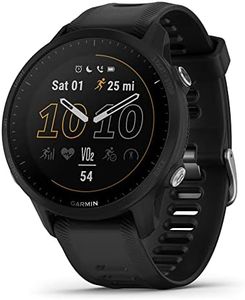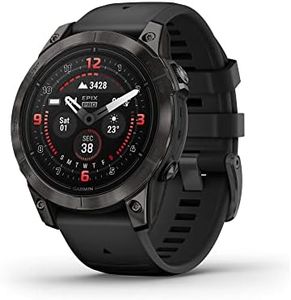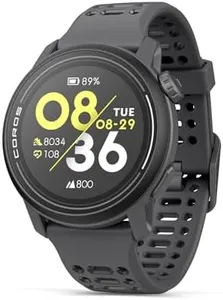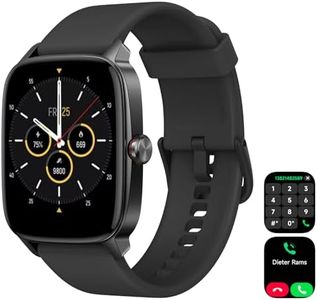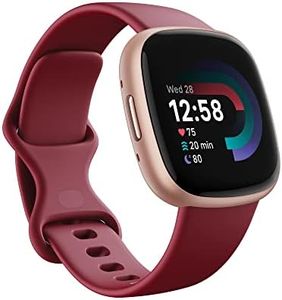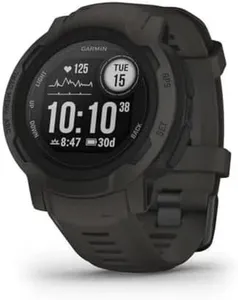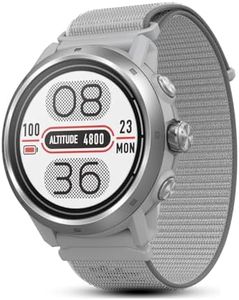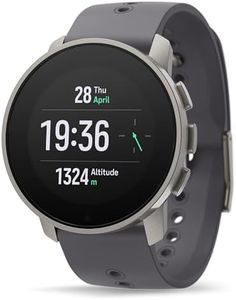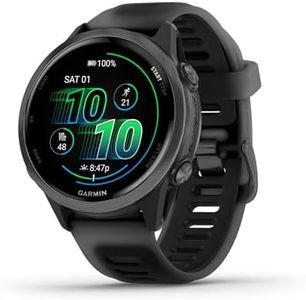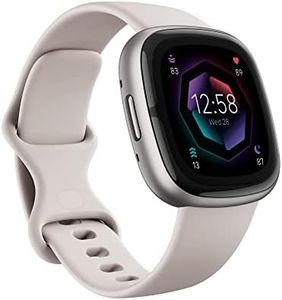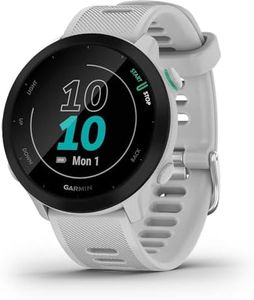We Use CookiesWe use cookies to enhance the security, performance,
functionality and for analytical and promotional activities. By continuing to browse this site you
are agreeing to our privacy policy
10 Best Triathlon Watches
From leading brands and best sellers available on the web.Buying Guide for the Best Triathlon Watches
Choosing a triathlon watch is an important step for any athlete who wants to track their performance across swimming, cycling, and running. These watches are designed to be multi-sport companions, offering robust tracking and smart features that cater specifically to triathletes. The right watch will help you monitor your progress, set goals, and analyze your data for continual improvement. Your choice should revolve around how well the watch fits your training routine, event requirements, comfort, and need for data accuracy.Multisport ModeMultisport mode lets you seamlessly switch between tracking disciplines (swim, bike, run) within a single workout. This is important because it allows all your triathlon sessions to be recorded as one event, which is essential for both comprehensive performance analysis and race simulations. Some watches offer manual switching while others can auto-detect changes; if you do brick workouts or races, prioritize models where transitions are fast and easy to use.
Water ResistanceWater resistance is a measure of how well the watch can withstand exposure to water, which is crucial since swimming is part of every triathlon. Levels are usually given in meters or ATM (atmospheres). Watches rated at 50m or 5 ATM are generally safe for swimming, while higher ratings offer greater protection for open-water races. If you swim long distances or in open water, favor higher water resistance levels to avoid damage and ensure accurate tracking.
GPS AccuracyGPS tracks your pace, distance, and route, especially during runs and rides. Good GPS accuracy is vital for reliable data, which in turn affects how you train and measure your progress. Some watches offer multiple satellite systems (like GPS, GLONASS, Galileo). More systems generally mean better accuracy, especially in challenging environments. Choose higher accuracy if you train in dense urban areas or forests, while basic GPS may suffice for open areas.
Battery LifeBattery life refers to how long the watch operates before needing a recharge, especially with GPS activated. For triathletes, longer battery life ensures that the watch lasts throughout training sessions or long races. Values can range from a handful of hours to several days depending on GPS intensity. If you do Ironman-length events or often forget to recharge devices, pick watches with extended battery life to avoid running out mid-event.
Heart Rate MonitoringHeart rate monitoring tracks your heartbeats per minute, giving insight into training intensity and recovery. Watches can measure heart rate via built-in sensors (usually on the wrist) or pair with chest straps for greater accuracy. If precision is key for you or if you use heart rate zones for targeted training, consider a watch that allows chest strap pairing. Wrist-based is more convenient for everyday use and less accuracy-dependent workouts.
Connectivity and AppsConnectivity refers to how well the watch syncs with your phone or computer, and compatibility with platforms (like Strava or TrainingPeaks). Some watches also offer smart notifications and music storage. If you like analyzing workouts in detail or follow training plans on digital platforms, prioritize good app integration. For those who mainly use a watch to check stats on the go, basic connectivity may be enough.
Comfort and DurabilitySince you wear the watch for extended training and during races, its comfort and build quality matter. A lightweight, ergonomic watch with a durable band and scratch-resistant glass is ideal for long days and rough race conditions. If you have sensitive skin or small wrists, look for lightweight or slim designs. Rugged models are preferable if you train outdoors frequently or participate in intense events.
Swim Tracking FeaturesSwim tracking features include lap counting, stroke detection, and open water GPS. Accurate swim metrics help you understand your efficiency in the water. Some watches provide advanced swim analytics or allow custom pool lengths. If swimming is your weakest discipline or you want deep insights, opt for watches with robust swim features. For basic use, simple lap counting and time tracking can suffice.
